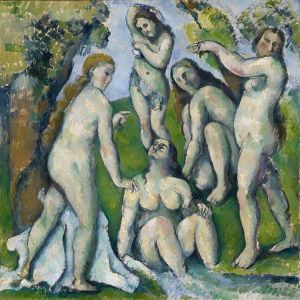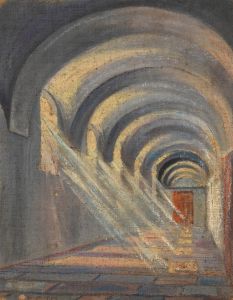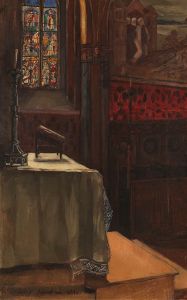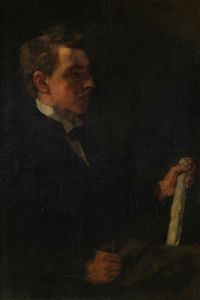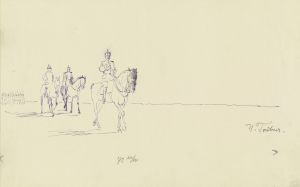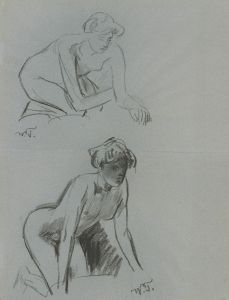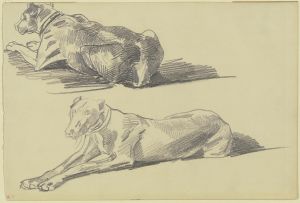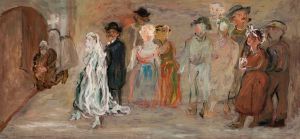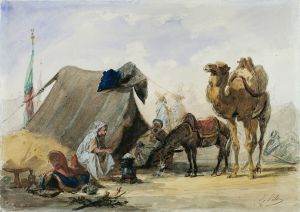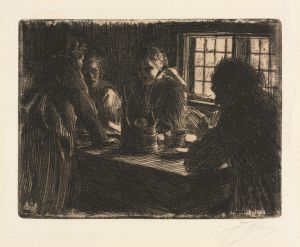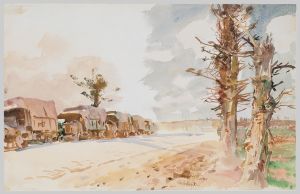
Prozession im Kreuzgang in Seeon
A hand-painted replica of Wilhelm Trübner’s masterpiece Prozession im Kreuzgang in Seeon, meticulously crafted by professional artists to capture the true essence of the original. Each piece is created with museum-quality canvas and rare mineral pigments, carefully painted by experienced artists with delicate brushstrokes and rich, layered colors to perfectly recreate the texture of the original artwork. Unlike machine-printed reproductions, this hand-painted version brings the painting to life, infused with the artist’s emotions and skill in every stroke. Whether for personal collection or home decoration, it instantly elevates the artistic atmosphere of any space.
Wilhelm Trübner was a prominent German painter associated with the Realist movement, known for his detailed and evocative works that often depicted scenes of everyday life and landscapes. One of his notable paintings is "Prozession im Kreuzgang in Seeon," which translates to "Procession in the Cloister in Seeon." This painting exemplifies Trübner's skill in capturing the essence of a scene with meticulous attention to detail and a keen sense of atmosphere.
"Prozession im Kreuzgang in Seeon" is set in the cloister of the Seeon Abbey, a historic Benedictine monastery located in Bavaria, Germany. The abbey, founded in the 11th century, has a rich history and has been a site of religious and cultural significance for many centuries. Trübner's choice of this location reflects his interest in historical and architectural subjects, as well as his ability to convey the serene and contemplative mood often associated with monastic life.
The painting depicts a religious procession, a common event in monastic communities, where monks or clergy would walk in a ceremonial manner, often as part of a liturgical celebration or religious observance. Trübner's portrayal of this scene is marked by his characteristic realism, capturing the solemnity and reverence of the procession. The figures in the painting are rendered with careful attention to their expressions and gestures, conveying a sense of devotion and spirituality.
Trübner's use of light and shadow in "Prozession im Kreuzgang in Seeon" is particularly noteworthy. The interplay of light filtering through the arches of the cloister creates a dynamic and atmospheric effect, highlighting the architectural features of the abbey while also drawing attention to the figures in the procession. This use of light not only enhances the visual impact of the painting but also contributes to the overall mood, evoking a sense of tranquility and introspection.
The composition of the painting is balanced and harmonious, with the cloister's arches providing a rhythmic structure that guides the viewer's eye through the scene. Trübner's attention to detail is evident in the depiction of the architectural elements, as well as in the textures of the robes worn by the figures and the stone surfaces of the cloister. This meticulous approach is characteristic of Trübner's work and reflects his commitment to realism and his ability to capture the essence of a scene.
"Prozession im Kreuzgang in Seeon" is an example of Trübner's ability to blend realism with a sense of atmosphere and emotion. His depiction of the procession not only captures a specific moment in time but also conveys a deeper sense of the spiritual and cultural significance of such events. Through his skillful use of composition, light, and detail, Trübner invites the viewer to experience the solemn beauty of the scene and to reflect on the historical and religious context in which it is set.
Overall, Wilhelm Trübner's "Prozession im Kreuzgang in Seeon" stands as a testament to his artistic talent and his ability to convey complex themes through the medium of painting. It remains an important work within his oeuvre and continues to be appreciated for its technical mastery and evocative portrayal of monastic life.





